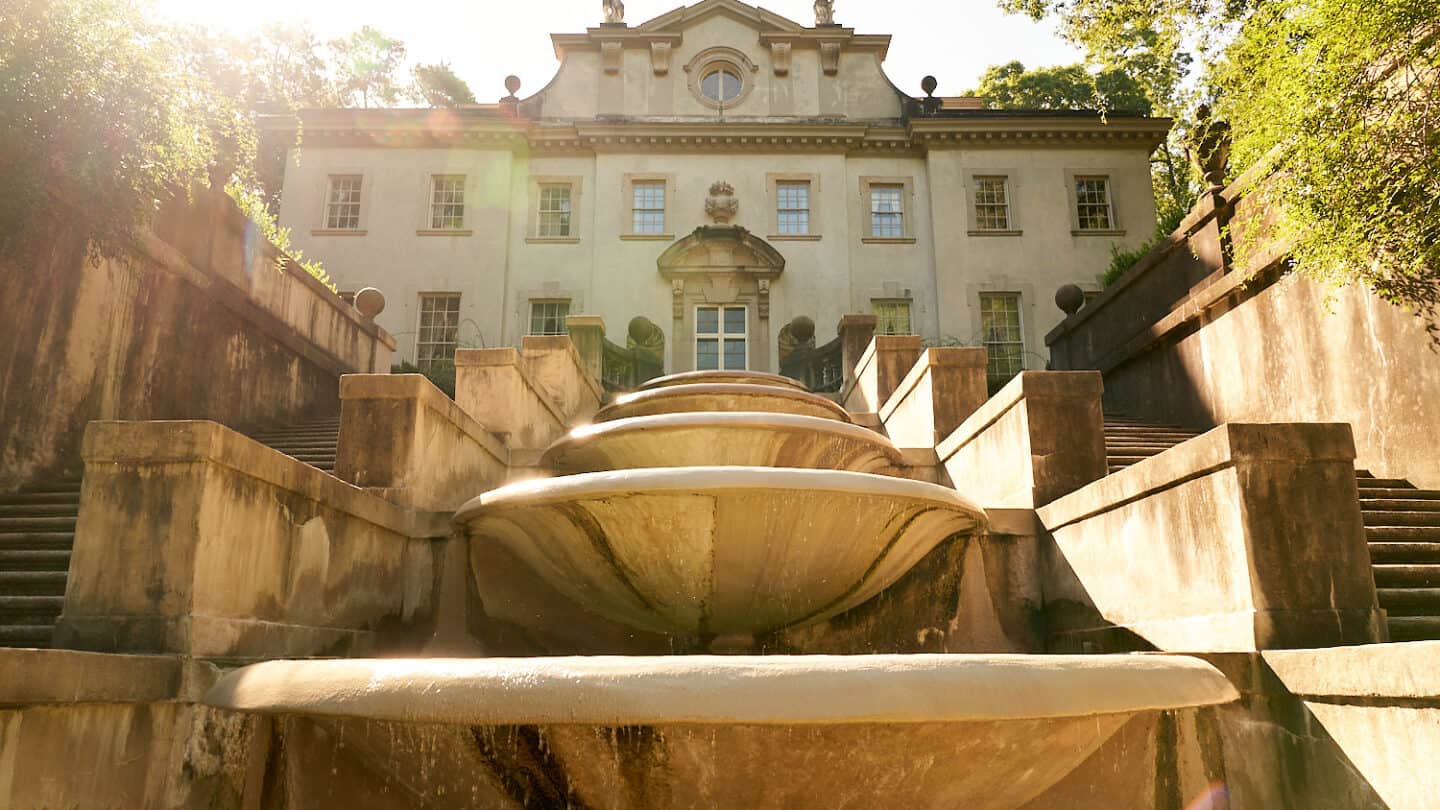Heir to a large cotton brokerage fortune amassed in the post-Civil War “New South” era, Edward Inman was a wealthy Atlanta businessman with interests in real estate, transportation, and banking.

His wife Emily was active in philanthropy, politics, and Atlanta society. In 1924, the Inmans hired the architectural firm of Hentz, Reid, and Adler to design a house for their property in Buckhead, then a countryside community about six miles north of downtown Atlanta.
Noted architect Philip Trammel Shutze designed Swan House and its gardens, as well as many other important buildings in the city. Shutze graduated from the Georgia Institute of Technology, Columbia School of Architecture, and the American Academy in Rome, Italy. He adapted Italian and English classical styles to accommodate 20th-century living for Swan House, which many consider his finest residential work.
The Inmans moved into their new home in 1928, a year before the Great Depression began. Just three years later, Edward Inman died suddenly at age 49. Emily asked her oldest son Hugh, his wife Mildred, and their two small children to live with her. Grandchildren Sam and Mimi grew up in the home and moved out after they were married.
Emily lived in Swan House until her passing at age 84 in 1965. In 1966, under the leadership of Louise Allen (wife of former Atlanta Mayor Ivan Allen Jr.), the Atlanta Historical Society purchased the home and most of its original furnishings, ranging from 18th-century antiques to 20th-century objects. It opened to the public in 1967 as a house museum and headquarters of the Atlanta Historical Society.
In 2004, the Atlanta History Center completed a $5.4 million restoration of Swan House and its furnishings. It is listed on the National Register of Historic Places.
Costumed characters from the Atlanta History Center’s Meet the Past museum theatre program greet and interact with guests to the historic home, and help give a sense of how it operated. In addition to actors portraying Edward Inman and Philip Shutze, visitors might cross paths with interior designer Ruby Ross Wood, who details the life of a professional woman in the 1930s; and chauffer Grant Carter and maid Emma Jean, who speak to the challenges and opportunities of their work for the Inmans and lives in Atlanta before integration.
Another highlight of a visit to the stately home is a stroll around striking Swan House Gardens. Swan House is perched on a hill with a cascading fountain, terraced lawns, roses tumbling over stone walls, and clipped hedges, reminiscent of great Italian gardens. An intimate boxwood garden and formal motor court complete the landscape, making this one of Atlanta’s best-known and photographed sites.
Behind the Scenes tours, including rooms and spaces not normally open to the public and stories of location filming for three of the Hunger Games series films at Swan House, are offered daily at 4pm.
Highlights
- A swan is in the leaded window above the door as guests enter the house from the columned porte-cochere at the rear entrance — the first of many that give Swan House its name.
- The graceful curving staircase in the main hall expressed a new form of American interior design that eliminated Victorian clutter in favor of simplicity and proportion.
- In the dining room, 18th century swan tables, purchased by the Inmans in England in 1924, are believed to have inspired the swan motif throughout the house.
- The Inmans updated the kitchen in the 1950s, but the 1936 Magic Stove has been returned and a 1929 model refrigerator has been added to recall the house’s early era.
- Off Emily Inman’s second-story bedroom, esteemed Atlanta bird artist-muralist Athos Menaboni painted draperies on the dressing room mirrors, swans on the ceilings, stars over the cabinets and faux marbling since Emily did not like the original marble color.
- On the third floor, a large circular window in the live-in maid’s bedroom offers a sweeping view of the historic home’s deep front yard.
- The Terrace Level is home to Mandarin Shutze: A Chinese Export Life, an exhibition of architect Philip Shutze’s decorative arts collection, including English and Continental pottery and porcelain, Chinese export porcelain, and American and English period furniture.
Contact
Learn. More.
-
Buildings & Grounds
Designed by Philip Trammel Shutze in 1928 for Edward and Emily Inman, Swan House is listed on the National Register of Historic Places.
-
Exhibition
Swan House architect Philip Trammell Shutze was an enthusiastic, talented, and determined collector of decorative arts.
-
Story
The Philip Trammell Shutze Architectural drawings collection comprises 638 sets of architectural drawings, 497 of which are digitized and available on our digital database.
-

